You may have noticed, but we’re crazy about astronomical photography here at EP, publishing a space-related “image of the day” at monthly intervals. Our recent foray includes a listing of some of our favorite photos from 2016, along with classics that many of you will instantly recognize. The resulting colors may look beautiful, but they hardly represent reality.
Astronomers make their observations using black-and-white CCD cameras and add filters to isolate the specific wavelength of light they wish to observe. Filters can match the specific colors that make up the visible spectrum but are often selected by which scientific data the astronomer seeks to detect. If the astronomer is searching for the presence of hydrogen, oxygen, and sulfur in a nebula, then they’ll use distinct filters that reveal each of the elements. Later, the resulting images are assigned a color in an image-editing software like Photoshop — say, red for hydrogen, blue for oxygen — and spliced together into a composite.
NGC 6357
Situated about 5,500 light years from Earth, the NGC 6357 nebula is more than just a tangle of iridescent space debris; it's a “cluster of clusters” containing at least three clusters of young stars and a swathe of the dimmer, older stars. Like most vibrant celestial photography, the composite image is a composite of multiple images shot in different spectrums and overlain atop one another. We see X-ray data from Chandra and ROSAT in purple, infrared data from Spitzer in orange, and visible spectrum data from the UKIT’s SuperCosmos Sky Survey in blue.
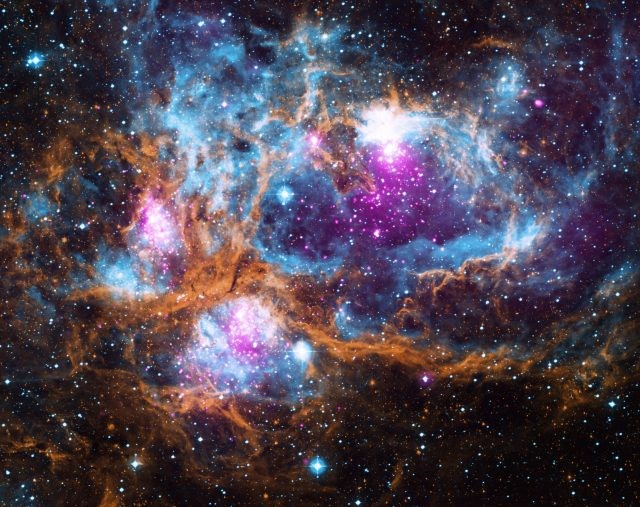
Source: NASA
Pismis 24-1
Here we see another mind-blowing view of the NGC 6357 Nebula, this time containing the famous Pismis-1 star (the brightest star in the cluster above) and a bright young star blowing a stellar bubble inside a nebula below. Fun fact about Pismis-1: it was once believed to measure a gargantuan 200−300 solar masses, but new data has since scaled its proportions to 100 solar masses, which is still immense, but not large enough where its death is so far off as to be inconceivable.
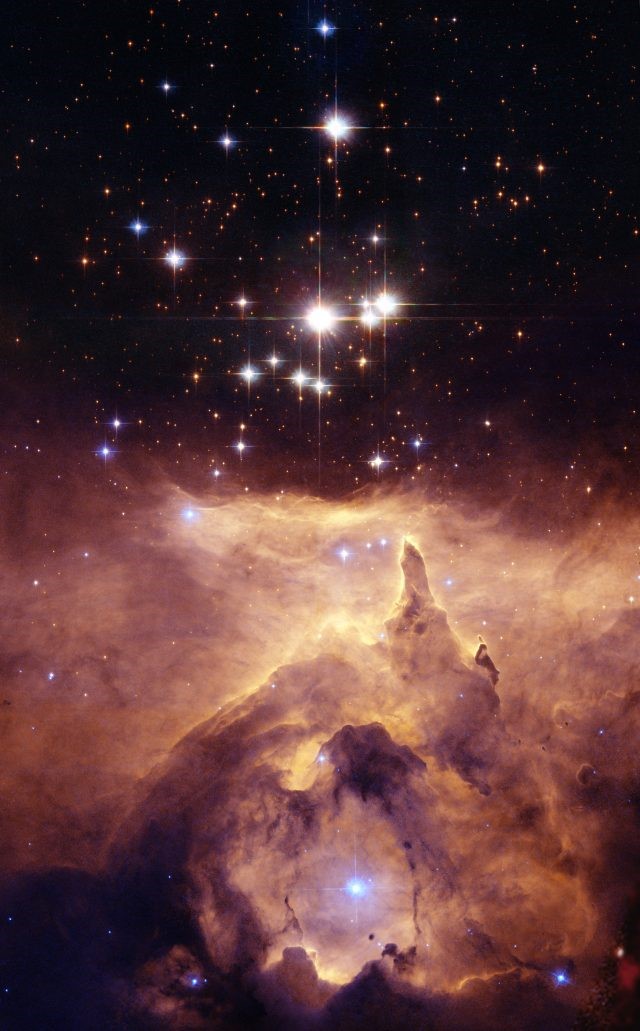
Source: NASA, ESA, and Jesús Maíz Apellániz (Instituto de Astrofísica de Andalucía, Spain).
Mars or Earth?
It’s easy to mistake the image below as a mountain range of the recess of Mars or the surface of Arakkis or some other planet abundant in the spice mélange, when in fact, it is the Anti-Atlas mountain range bordering Sahara in western Algeria. The image was shot from space by the Copernicus satellite, so it technically counts as a “space-esque” image, and Earth is technically considered an exo-planet. Note the presence of an asteroid crater from an impact event some 70 million years ago.

Source: ESA
Mystic Mountain
Located in the larger Carine Nebula, the “Mystic Mountain” portion of the nebula is a region of high-energy activity where new stars are born as pairs of opposing jets at the end of collapsing columns of gas are flung from accretion jets. The different depicted colors represent different elements in the composite image: oxygen in blue, hydrogen and nitrogen in green, and sulfur in red.
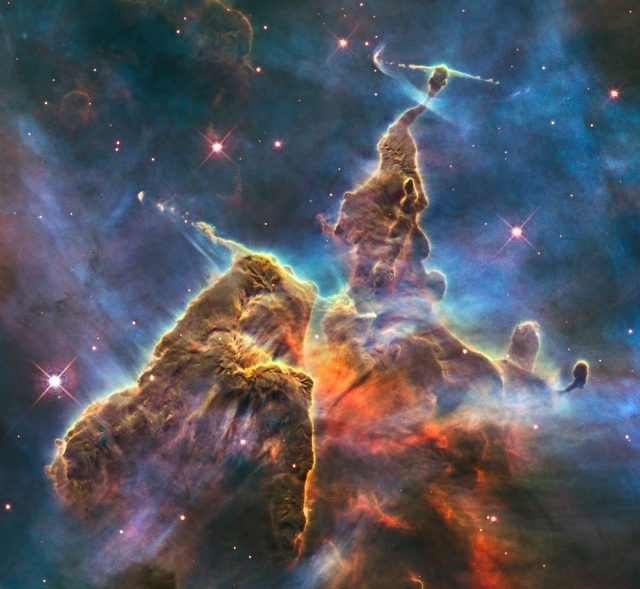
Source: STScl
Stellar nursery in Centaurus
Like human nurseries, the stellar-variant is a high-energy place of motion where irradiated matter reaches extremely high levels, causing protons to scatter as it calms back to its original state. UV, X-ray, and gamma bands of radiation bombard the center of the nebula with such intensity that they’re eroding away the dark clouds — called Thackeray globules — silhouetted against the glow. The ESO describes the globules as “sizzling away like butter in frying pan.”
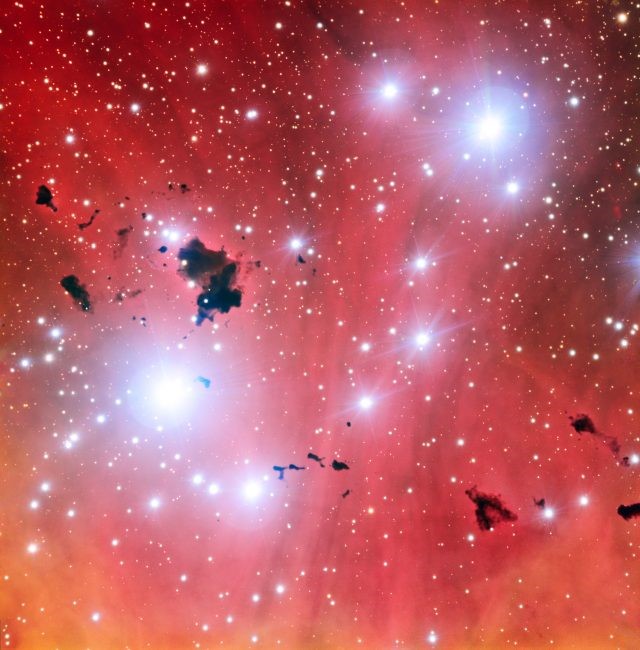
Source: ESO
The Eagle Nebula
The only space image from our collection shot in the visible spectrum, the Eagle Nebula itself contains an iconic and much-photographed image in space, the Pillars of Creation.
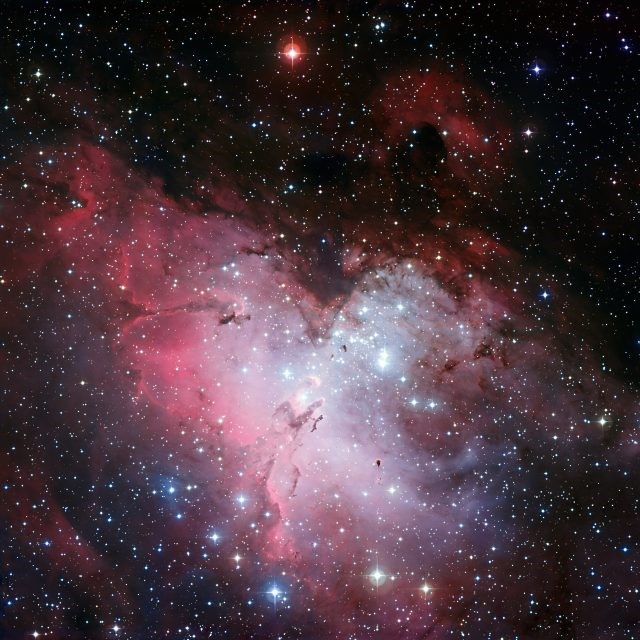
Source: ESO
Medusa Nebula
Scientists predict that the Medusa nebula was formed from the remnants of a dying star that exploded and left behind wisps of gas and dust. Stars, which explode in a similar manner, end their lives as white dwarfs, and our sun is expected to have a similar fate eventually.
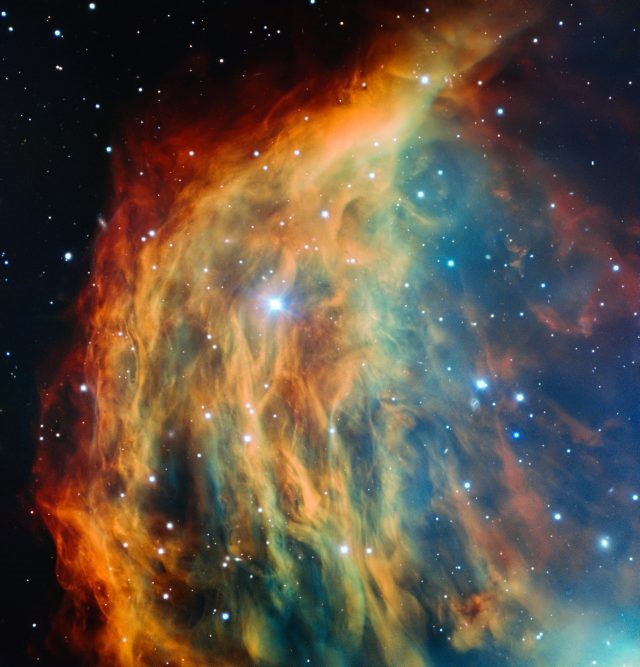
Source: ESO
Source: ExtremeTech
Advertisement
Learn more about Electronic Products Magazine





